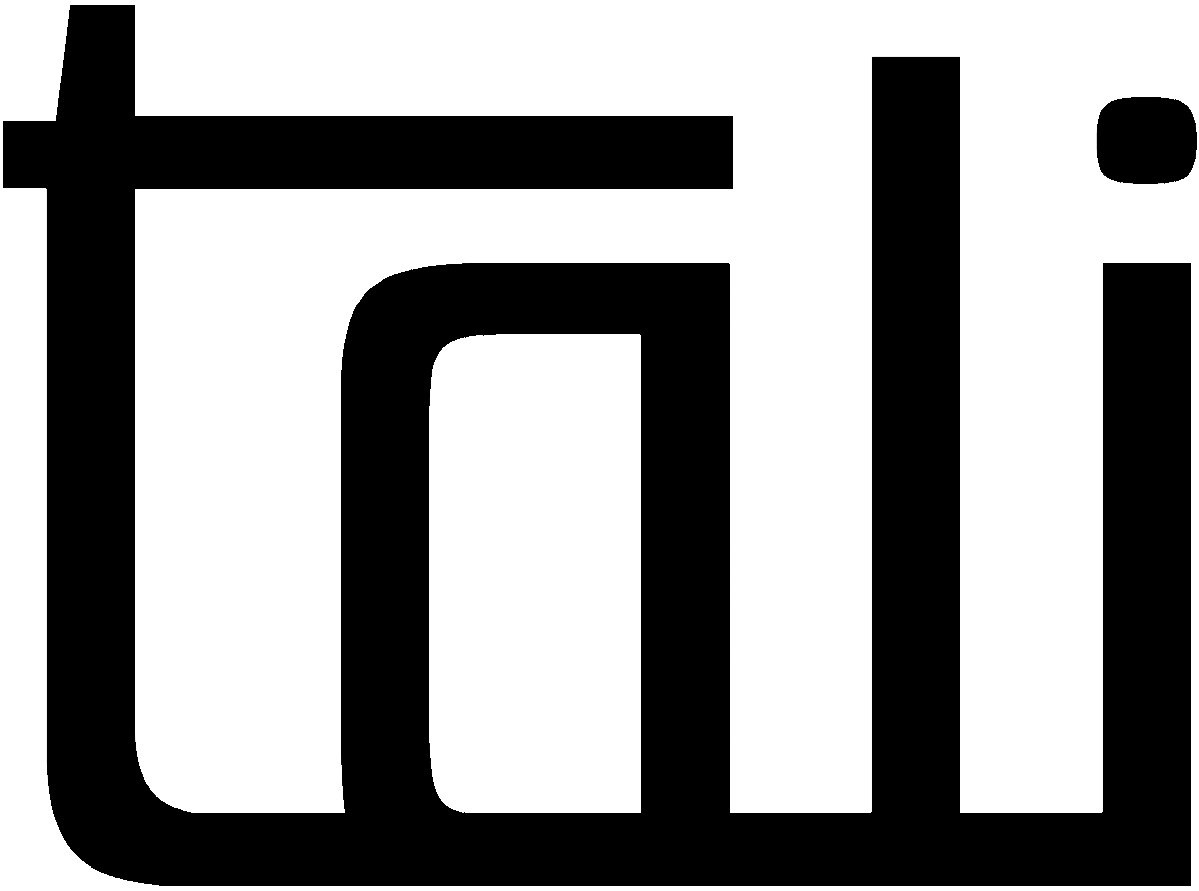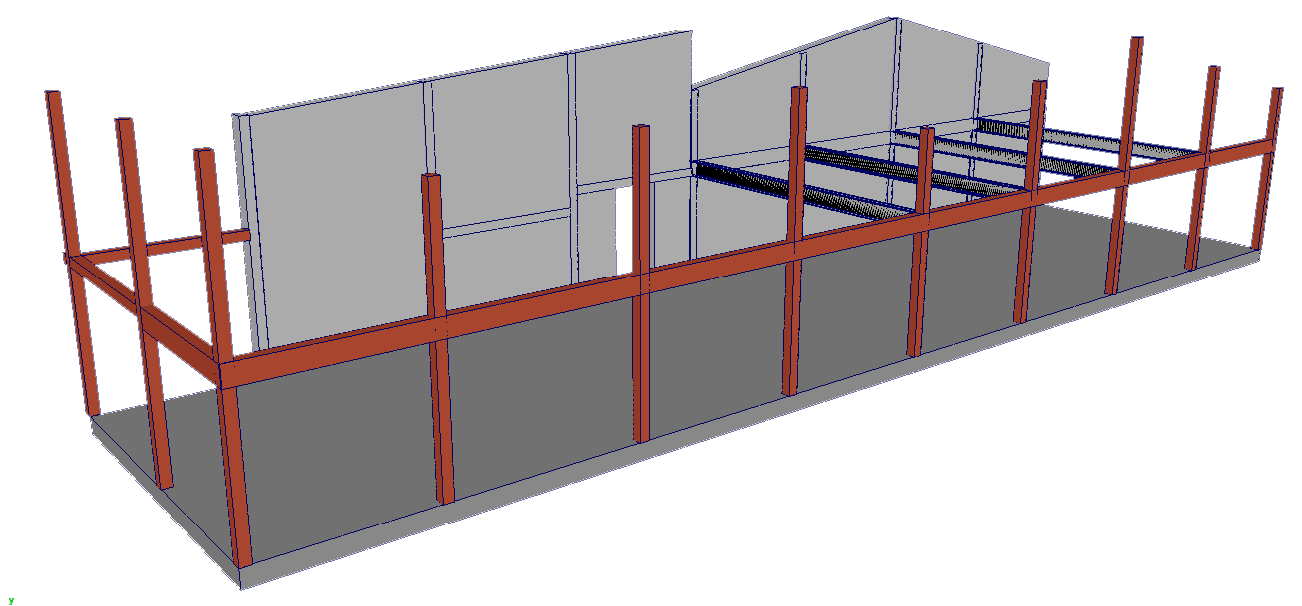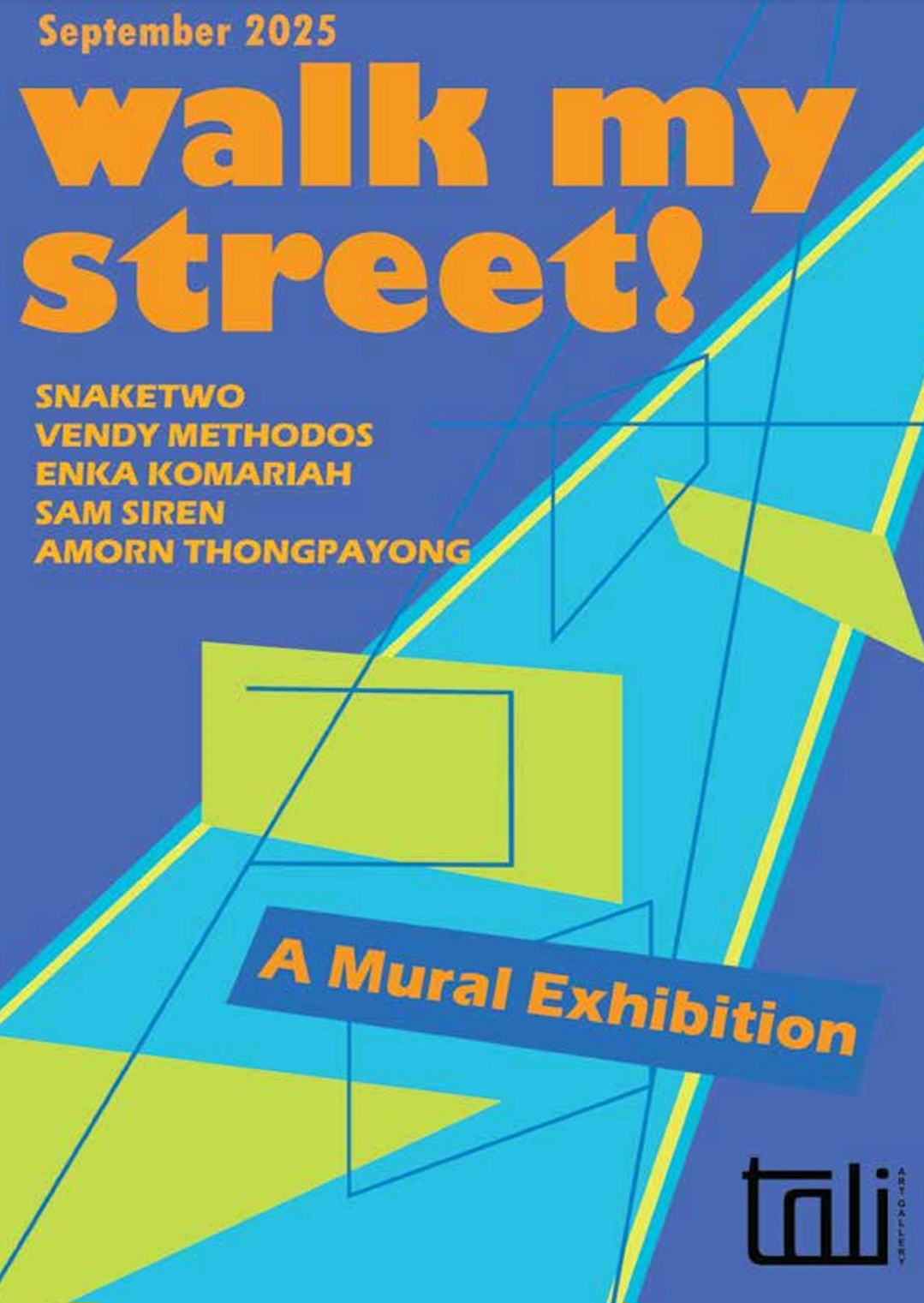Walk My Street! A mural exhibition
07 September – 05 October 2025
Featuring: Vendy Methodos, Enka Komariah, SnakeTwo, Sam Siren, Amorn Thongpayong
Five walls, one week!
Walk My Street! explores the possibilities offered by verticality and surface and plays with the limits of what a mural can be. Coming from Indonesia, Brunei, Thailand and Malaysia, each artist is given an entire wall to express their creativity!
Excerpt from the catalogue
For a long time, the mural was primarily decorative, its analysis shifting between aesthetic and sociology. It served a function, acting as an established marker within its environment. In a contemporary context, however, the medium itself prompts questioning, situated somewhere between painting, installation, and illustration, between image, gesture, and intention. Above all, it is a format where, somewhat paradoxically, the site of experience can remain elusive. A gallery extended outward, a reclaimed environment, the mural remains inseparable from the wall. It is around this connection, reduced to its essential expressions of verticality and surface, that Walk My Street! was conceived.
It begins with the tension of a gaze, a literal attention, cast into the distance, only to meet the limits of an anthropized horizon, or caught, as if seized, by a detail, a reflection, some kind of a difference. At first, there is distraction or obstruction, but rarely attention, observation or the will to understand. A wall is a wall; its remarkably stable essence offers little exhilaration beyond some minimal material variations. It is a firm axis, often straight, somewhat smooth, somewhat forgotten, trapped in an almost functional camouflage. Everything slides off it. Even the rain.
A little eroded, a little stained, sometimes overgrown or peeling or disguised the wild wall, the one of cities, the outside wall that both confronts and confines the gaze and the space, becomes a vector of history. It clings, sometimes like a reef, to the sediments of a profoundly visual world, layer upon layer, until it gains its own kind of depth. Eventually a sign, a graffiti, an image or an artwork may anchor itself to its surface. It becomes a romantic wall, the kind that calls out from alleyways, where people are absent or merely passing through, modestly crossing time and fragments of life.
These are the streets and houses that Amorn Thongpayong likes to let emerge from his long-nurtured plates of mezzotints, which he patiently prepares himself, this extended temporality seeming to match that of his subjects. A slow time, made of subtle variations, until the tool leaves indelible marks. From shadow to the white light of the paper, the simple secrets of a journey are imprinted, animated frame by frame through a short film. The fixed framing—the matrix—emphasizes temporality more than materiality, or rather, the transformations of a solid reference point. Here, the wall reassures and supports a kind of quiet nostalgia. Exterior, it travels through the image, becoming subject rather than support.
Into the gallery space, the wall is a boundary or a support, neutral, white, stripped of its full material weight. In a reflex of reappropriation, the artist creates their own anchors. Brassaï followed Picasso around Paris as he scratched into walls. The inscription of a name signals an intention. Beyond the transgression of the act, the mark is made and endures. SnakeTwo pushes this logic, at the heart of street art, through style in works that assert themselves through a fully developed aesthetic. The intensity of the colours, the confidence of the forms, the scattered leitmotifs all act as semiological redundancies, the affirmations of self by the self, the evidence of a gesture through works whose scale necessarily implies physical engagement. Breaking the unity that could relegate mural art to mere image through surface regularity, he fragments and assembles, combining various materials that in turn demand a full fusion of self with the creative act, like reusing his own spray paint packaging or mechanical recurrence. By branching his imprint through different layers of reality, he exceeds the image with highly graphic wiring, turning the object into a line, and forms into visual objects.
This mediated play gives the artist the opportunity to subtly raise questions that go beyond the scope of visual expression and open onto a keen awareness of the nature of what surrounds him. Vendy Methodos, through the singular figures populating his works, projects a broader vision of art as essence. The trompe-l’œil of rusted corrugated metal in the background of his mural is as much a reminder of his daily observations on the streets of Yogyakarta as it is a deeper reflection on the essence of matter, born of matter in an almost perfect fusion of nature and essence, when human acts and intentions bear the weight of existential meaning. Everything in man urges him to become and from this, Vendy draws marvellous, acerbic figures. In the transitive succession of experiences that shape the definition of being, there is, in contrast, the surrounding solid constancy. The disjunction of these two states within the work calls into question the importance of art itself as a constant becoming. By considering it as an essential form escaping the stability of its own definition through its passage between different hands, and ultimately those of the collector, the artist offers the viewer a unique chance to locate themselves within this ambivalence.
Placement and displacement, so closely intertwined within an exhibition, shape the experience through the sheer scale of artworks that, unable to be grasped in a single glance, compels the viewer to consider distance as an integral component of a mural. Enka plays with depth through the fluid subtlety of successive applications, as if to move beyond the viewer’s potential comfort into a more direct engagement. History seems to flow through the diluted drops of water that escape from each of his brushstrokes, binding together the elements of a complex national narrative that he relentlessly interrogates. Painting with his distinctive colours—a blood-tinged red, an ink-like black—he echoes the thousands of documents he combs through in his research and uses as the very support for his work. In doing so, he breaks down the rigid separation between background and surface, between text and image, past and present, artwork and document. In this gesture, he seems to summon the past into a present where memory is often imprecise. Leaning against the wall of history, he projects his own intention onto it, taking the viewer as a witness. His visit to Malaysia was an opportunity to travel to George Town, to see the memorial erected for James Richardson Logan, the man who popularized the use of the name Indonesia. Another wall, another symbol, and always the urge to raise history upright, facing itself.
The fluid relationship between the work and its surroundings arises from gesture, from the performative imprint left on a surface, which it connects to a broader environment through a sense of embodied action. Not everything that inhabits the wall is bound by its verticality; the shift from a horizontal path to a vertical projection draws the gaze into an enveloping depth.
By embracing an abstraction grounded in materiality, merging plastics, gold leaf, and dynamic paint, Sam Siren disrupts the visual reference points of line and flatness that typically stabilize the viewer’s relationship to the act of looking. In doing so, she opens a new spatial dimension, transforming the mural into a point of access for an unprecedented experience that transcends its own condition. The artist herself enters a state of vulnerability: painting on the ground before re-engaging with the wall from a renewed angle, she reorients her practice through this physical and perceptual shift. By exploring the richness of her synesthesia, she positions herself outside of habitual frameworks and this reversal of the plane becomes a way to regain control through a deliberate break in continuity and comfort, challenging the mural’s projection as a seamless phenomenon. Gold and raw matter act as markers of material presence, preventing the pictorial charge from slipping entirely into a liquid or ephemeral state. The wall remains solid, and its presence reverberates in the firm, indirect echoes of these material reefs.
Only physical experience can bind the many forms of murality to a shared reference point: the appreciation of scale through movement, and the reintroduction of time as an essential dimension of both art and pleasure.
The necessary and enjoyable act of walking the street.
- Sam Siren, Breathe, 2025
- SnakeTwo, Masking, 2025
- Vendy Methodos, Avant-garde are the people with own philosophy and no mauvaise foi, 2025
- Enka Komariah, Lorong Indonesia bagian pertama #2, 2025








